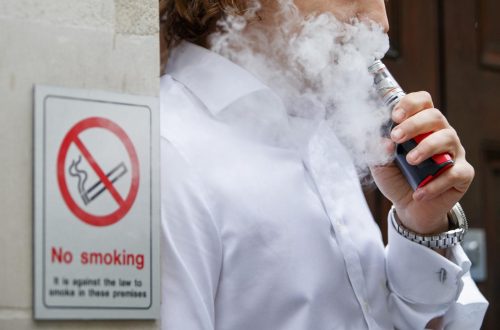Source: www.newsweek.com
Author: Melissa Matthews
Electronic cigarettes may have been deemed safer than traditional smoking by the American Cancer Society, but that doesn’t make it a risk-free habit. Past research has found that oils used to vape contain toxins, and a new study shows that the latest e-cigarette devices might leak dangerous amounts of metal, including lead, which could have serious health risks.
In a study published in the February 2017 issue of Environmental Research, public health expert Ana María Rule of Johns Hopkins University found that liquids used in the first generation of e-cigarettes could be potentially toxic and carcinogenic. However, things have changed in just one year as companies constantly offer new, more sophisticated devices. Plus, Rule was often met with questions about the safety of inhaled aerosol.
“A lot of people were asking, ‘You found these metals in the liquid, but what does this mean?’ Are they getting into the vapor that I’m inhaling?’” Rule explained to Newsweek.
So, the team began a new project studying the latest devices, called Mods, as well as the aerosol inhaled by smokers.
For this study, 56 daily e-cigarette smokers lent their devices to Rule’s lab, where scientists tested the vaping liquid, liquid inside the e-cigarette tanks, and the aerosol. They looked for 15 different metals including lead, chromium, nickel and manganese, which are the most dangerous, according to Rule.
Some of the refilling dispensers did contain small amounts of metal. However, liquids in the e-cigarette tanks and aerosols contained higher levels. Rule believes the heating coils found in the tanks could somehow be transferring metal into the aerosol. This is alarming as aerosol is inhaled by users.
The data showed that nearly 50 percent of aerosol samples contained lead in quantities above the Ambient Air Quality Standards set by the Environmental Protection Agency. In addition, the concentrations of nickel, chromium and manganese found in nearly half of the aerosol samples exceeded the limits. Every e-cigarette in the study was different, so the amounts varied per model. This variety, explained Rule, is one of the study’s strengths.
“Every person that came into our study brought in their own device,” she said. “We think it’s representative of what people are vaping in the country.”
Arsenic also was found in some of the e-liquid samples, both in the chamber and refills, as well as some vapor samples.
Now that exposure has been established, the next steps are to determine if, and how, it impacts the body. Rule hopes this study, and corresponding research, will push the Food and Drug Administration to begin regulating e-cigarette pens. She believes quality control and newer, safer devices are issues that need to be addressed.
“Maybe there’s another way to heat or isolate the liquid from the heating element,” she said. Although she doesn’t believe vaping is safe, Rule asserts there needs to be better devices for those who insist on the habit. “There’s got to be a safer way to do it,” she said.


Leave A Comment
You must be logged in to post a comment.